The plant stress resistance gene function research team of the Institute of Bioscience and Biotechnology of Chinese Academy of Tropical Agricultural Sciences has made new progress in the research of cassava biological breeding technology, established an efficient genetic transformation and gene editing system for the main cassava cultivar South China 8 (SC8), and provided technical support for cassava gene function identification, mutant creation, and biological breeding.
At present, the model variety of cassava genetic transformation is TMS60444 variety from Africa, which has low yield and starch content, many branches and poor disease resistance, and is not an ideal biological breeding receptor material. Therefore, it is of great significance to develop efficient genetic transformation techniques for cassava varieties in China. The SC8 cassava variety was selected by the Tropical Crops Genetic Resources Institute of CATAS. It has the characteristics of high yield, high starch, strong adaptability and high seedling emergence rate. It is the main variety suitable for feeding and industrial application.
The research team optimized the conditions under which Agrobacterium LBA4404 infects SC8 cassava fragile embryogenic callus (FEC) (bacterial solution concentration, acetosyringone concentration, co culture time, humidity, etc.). About 120-140 transgenic positive lines can be obtained from 1 mL FEC (Fig. 1, 2), and the transformation efficiency is significantly higher than that of transgenic model variety TMS60444. On the basis of the establishment of an efficient genetic transformation system, the team used the YAO promoter highly expressed in the meristem to drive the expression of Cas9 protein, and edited the cassava MePDS gene. The gene editing efficiency reached 93%, and the single allele homozygous mutation rate reached 45%, which is the highest homozygous mutation rate in the cassava gene editing field so far (Figure 3).
The research team improved cassava quality and disease resistance by using efficient genetic transformation and gene editing techniques of SC8 cassava varieties, and preliminarily established cassava gene editing mutant library. The MeMYB75 gene, a key gene for the regulation of cassava anthocyanin synthesis, was excavated and identified, and a cassava germplasm with high anthocyanin content was created through transgenic technology (Fig. 4). The promoter of the gene editing susceptible gene MeSWEET10a has created cassava germplasm that is resistant to bacterial wilt and does not affect the yield (Fig. 5).
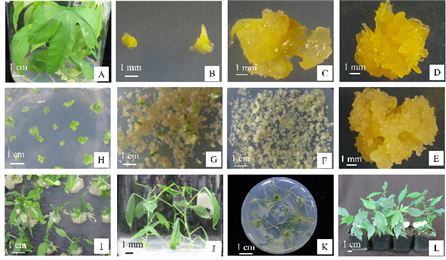
Transgenic System of SC8 Cassava Varieties
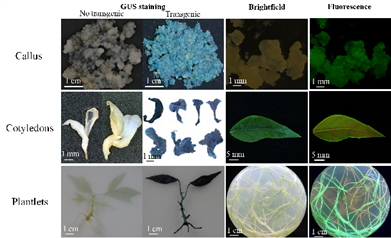
Detection of foreign gene expression effect
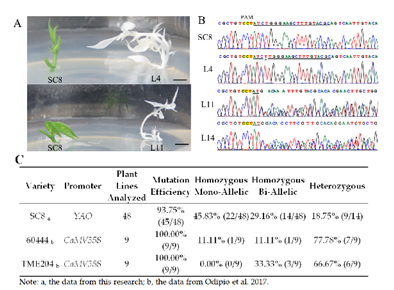
Analysis of gene editing effect
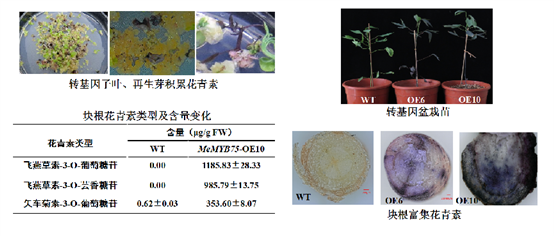
Transgenic cassava germplasm with high anthocyanin content
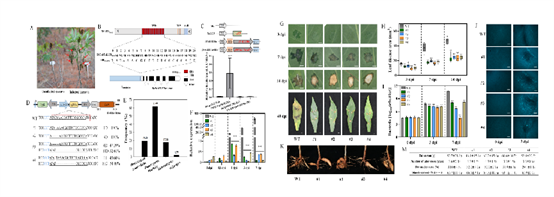
Creation of cassava germplasms resistant to bacterial wilt by gene editing
Some research results were published in Genes under the title A Transformation and Genome Editing System for Cassava Cultivar SC8. Yao Yuan, Associate Researcher and Guo Jianchun, Researcher of Institute of Bioscience and Biotechnology, CATAS, are the co corresponding authors of the paper, and Wang Yajie, Lu Xiaohua and Zhen Xinghou, PhDs, are the co first authors. The research was supported by the national key R&D plan, the Yazhou Bay seed laboratory project, the national cassava industry technology system and other projects.


